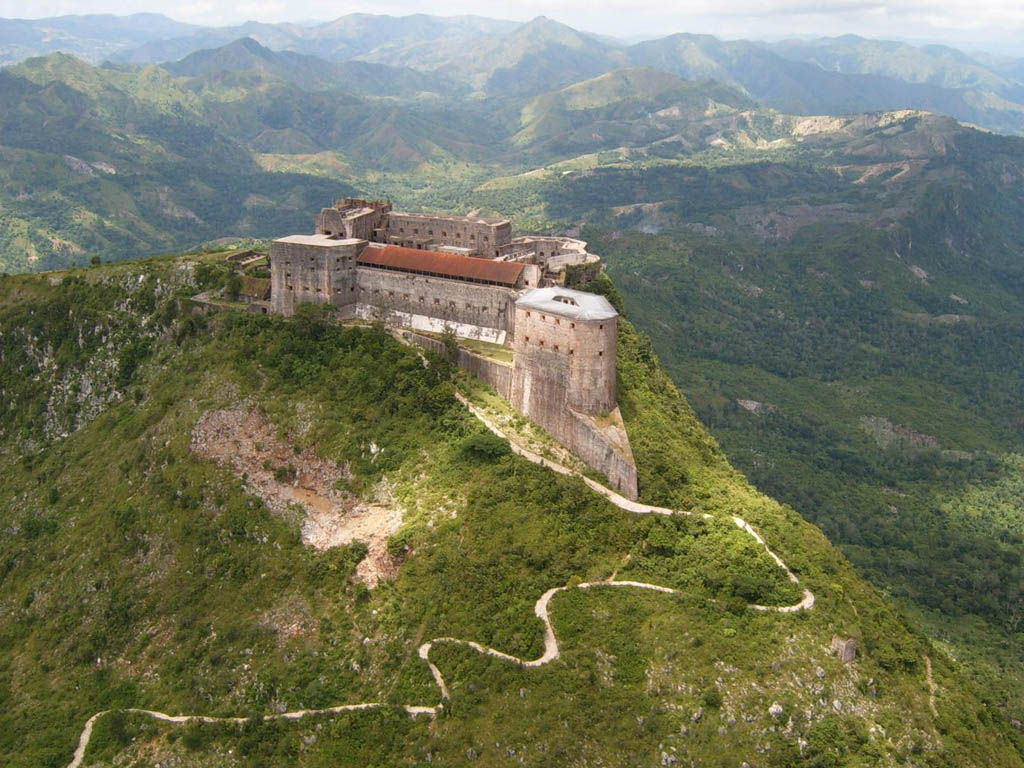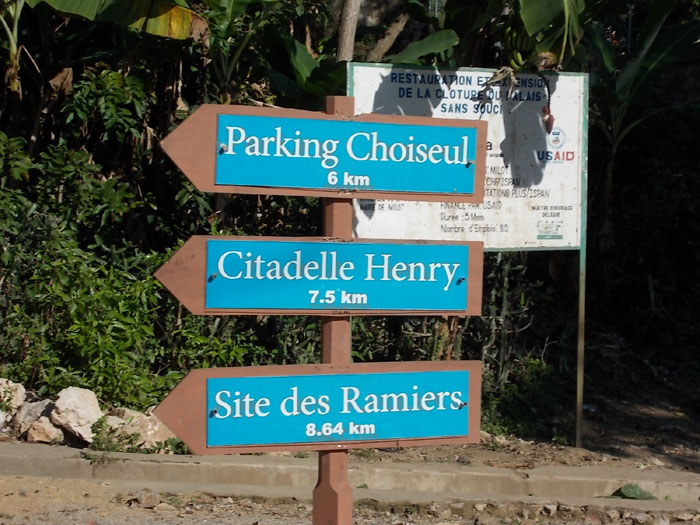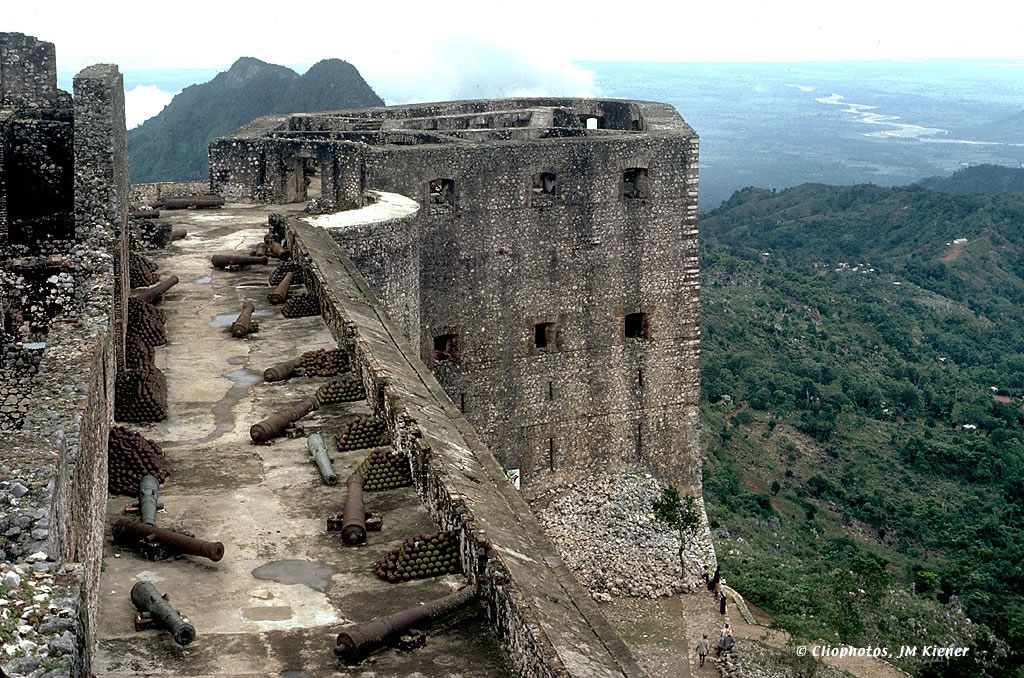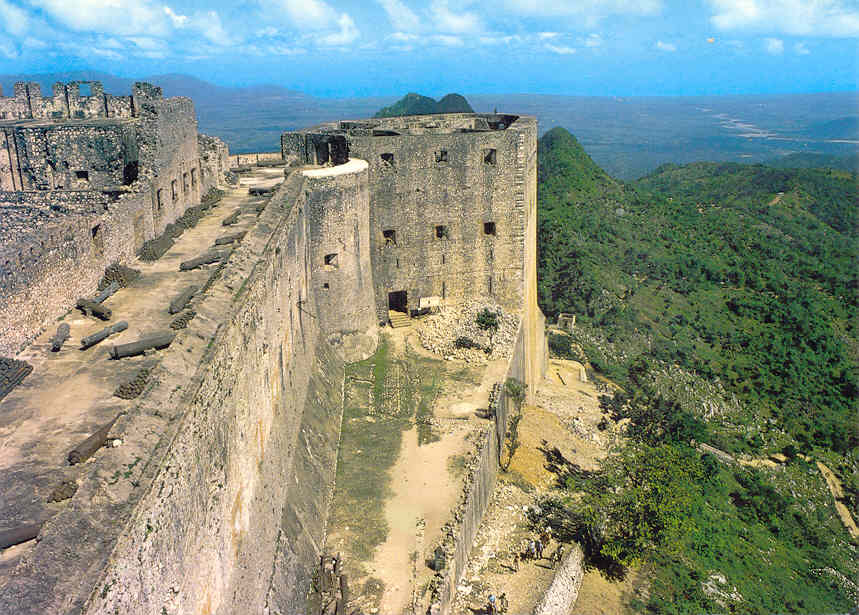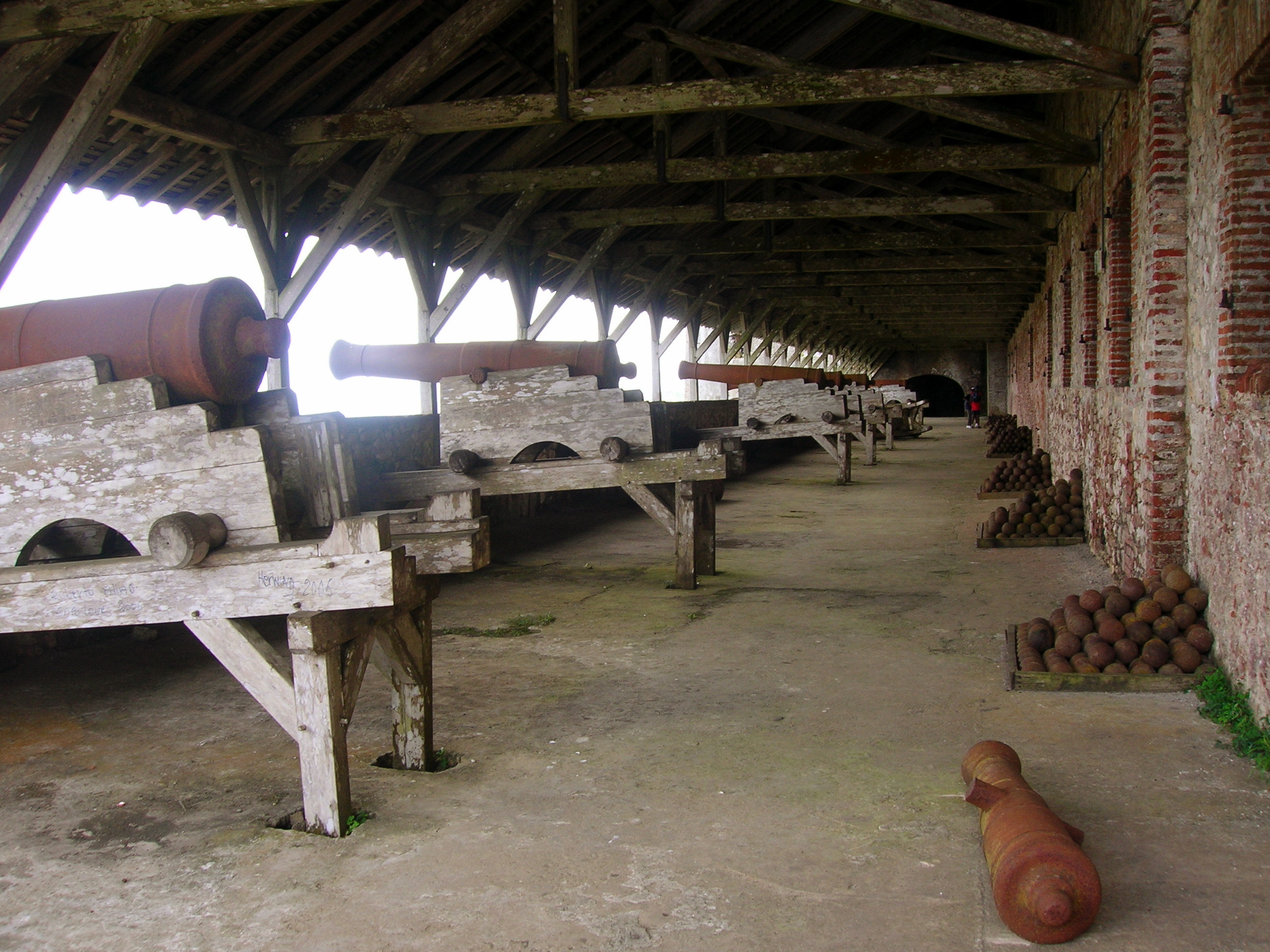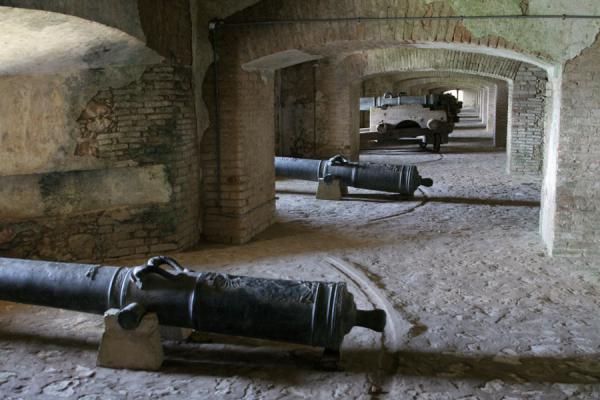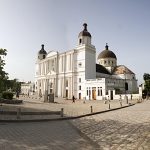The Citadelle
The Citadelle is the largest fortress in the Americas and was designated by the United Nations Educational, Scientific and Cultural Organization (UNESCO) as a World Heritage Site in 1982—along with the nearby Sans-Souci Palace. The mountaintop fortress has itself become an icon of Haiti. The Citadel was built by Henri Christophe, a key leader during the Haitian slave rebellion, after Haiti gained independence from France at the beginning of the 19th century.
The Citadel is one of the most popular tourist destinations in Haiti. Directions to and history of the fortress are provided by self-appointed guides from the town of Milot. Near the entrance to Sans-Souci Palace, which is at the start of the trail to the Citadel, visitors may be asked to pay a small fee. Visitors are also encouraged to rent a horse for the uphill trek. The first portion of the seven-mile (11 km) trail is navigable by 4WD vehicle, although infrequent landslides and construction projects sometimes make this unreliable. Numerous people live along the trail and sell souvenirs or drinks, such as fresh coconut juice, to travelers. Drinks are a necessity in the tropical heat. The trail is paved stone, generally smooth and in good condition, a legacy of the Jean-Claude Duvalier regime.
About three-quarters of the way up from the parking lot, visitors must complete the final portion on horseback or on foot. The entire seven-mile-trail, starting in Milot, is almost completely uphill, but can be walked by experienced hikers who carry plenty of water. Most of the interior of the Citadel fortress itself is accessible to visitors, who may also climb the numerous staircases to the fortress's roof, which is free of guardrails. On a clear day, the city of Cap-Haïtien and the Atlantic Ocean can be seen to the north. Because of its elevation the top of the Citadel is used by United Nations Stabilization Mission in Haiti (MINUSTAH) for a Radio repeater, with an antenna on the highest point.

